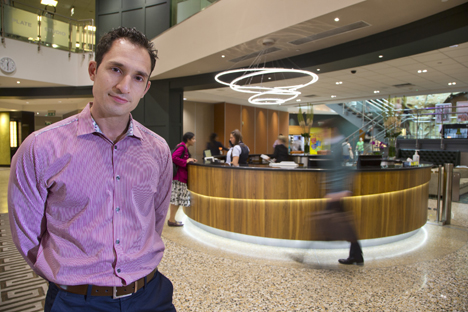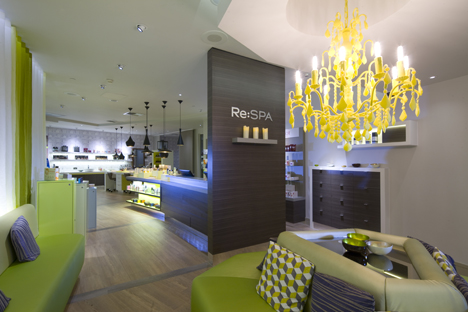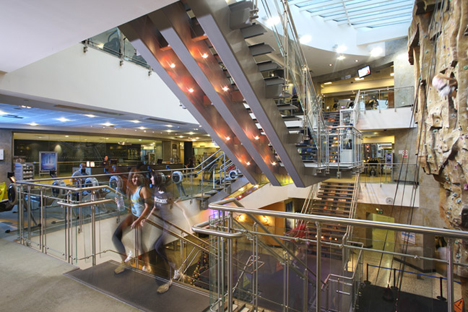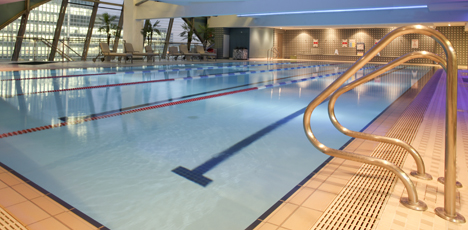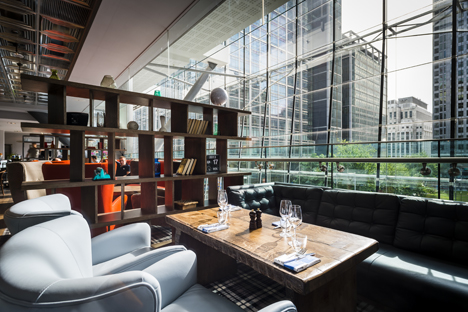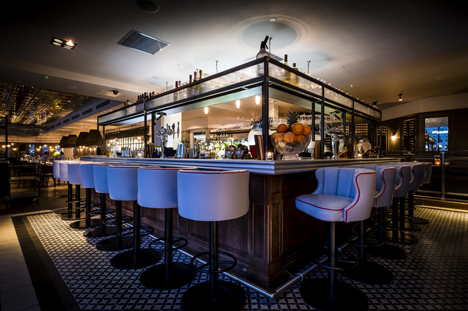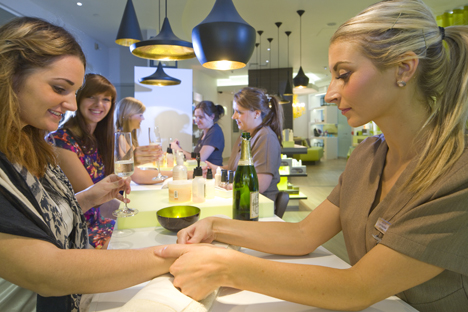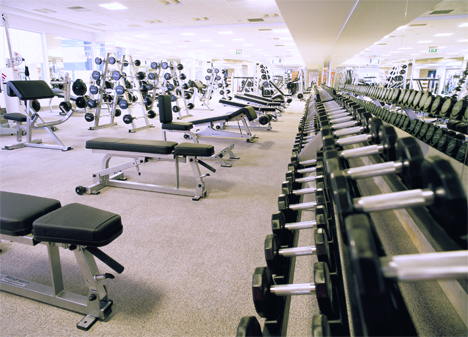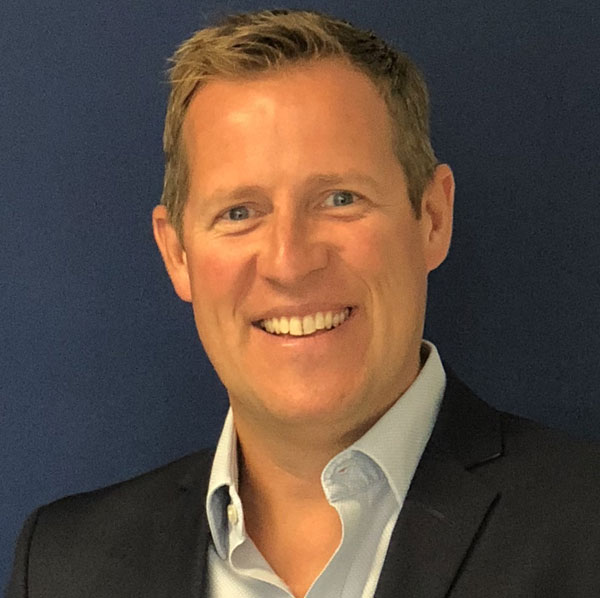When you take over the reins at a large, successful club like the Reebok Sports Club London, the temptation must be to sit back, assess the situation and not do anything too dramatic in the first few months. Not so John Penny. With the advantage of having already been general manager of the club for almost five years – and with a background in managing large, high-end facilities such as the Harbour Clubs – on being promoted to MD in 2011, Penny immediately embarked on an ambitious and comprehensive review of the offering and operations.
“We were starting to recognise the opportunities we had to really develop our secondary services, with the three main ones being personal training, the restaurant and the spa,” he explains.
Getting personal
“One of the big things we did towards the beginning of my time as MD was re-organise the PT set-up. We used
to have a contract agreement with someone we’d known for a very long time, and who worked with his team within the club. We changed that, bringing someone in from New York to head up our personal training. Some of the trainers are still self-employed, but the PT business as a whole – including the new manager – is now directed by me and my team.
“It’s going very well. We’ve grown the team from 15 to 20–25 PTs and our PT revenue almost doubled within the first 12 months of the new system. We’ve also started to branch out into other areas of private training, which is very big in the States, such as yoga, martial arts, boxing and small group training.
“As part of that, around 18 months ago we introduced three new areas to the gym floor: a boxing and combat area, a functional zone and a heavy lifting area.
“But we still have more to do. If you look at some of the large format clubs in the States, the top-performing sites will have 20–30 per cent of their members doing personal training. We’re currently around 7–10 per cent, and I want to move that up to 15–20 per cent.
“That’s challenging, because of course members need disposable income to do PT, but there are many different ways to approach it. That was one of the main reasons I brought in a very experienced PT director from New York – because the US is ahead of us, with many different ways of packaging PT. They do it in small groups; they have tier systems with different price points offering different levels of education. These are some of the things we’re trying out, to address the needs of members who would like to have private training in some capacity, but who might not previously have been able to afford it.
“That pretty much took us up to the early part of last year, but it’s settling down now and we’re starting to see the fruits of our labour.”
Spa & restaurant
Penny continues: “At that point we turned our attention to the other big secondary businesses in the club, namely the spa and the restaurant.
“Sparcstudio were brought in to oversee the refurbishment of the spa, which was rebranded from Reebok Spa to Re:SPA. It still offers everything it had before – standard spa treatments as well as complementary services such as physiotherapy, podiatry, osteopathy, hypnotherapy – but we introduced a lot of new elements too.
“There’s now an express treatment room, champagne manicure bar, large make-up area, new relaxation lounge, spray tanning section and a much larger retail area stocking Murad, Aromatherapy Associates and Guinot. We also fully refitted the other seven treatment rooms. That work was completed last October, although developments are still ongoing – creating a new spa website that links with the club’s website, for example.
“It’s an urban spa so people don’t generally stay all day, although we’re addressing day spa, particularly at weekends. It’s open to non-members as well as members – 35–40 per cent of our Re:SPA business is from non-members – with members receiving a 5 per cent discount.”
Next up came the restaurant, which officially opened in May of this year, this time designed by B3 of Shoreditch, London. “We used to have what I’d describe as a gym canteen that did a reasonable lunch service. It was doing pretty well, but it needed a refurbishment anyway and the location over Canada Square Green was an ideal opportunity to do something special. Our investors recognised that.
“Now we have a fully operational, Monday to Saturday, West End-style restaurant and cocktail bar. It’s been a total transformation. It has a 1950s-inspired, Madmen-style Shoreditch House vibe. It’s very relaxed and informal but lovely.”
A specialist general manager has been recruited to run the restaurant, which now operates under a distinct brand – The Pearson Room. As with the spa manager, this GM reports directly into Penny and his team.
Each of the three brands – Reebok Sports Club, Re:SPA and The Pearson Room – will, as Penny explains, be “connected but separate”, with distinct identities and separate but interlinked websites. “This will help us draw in the non-member customer,” he adds. This is particularly the case with the restaurant, which sits below the club with a separate entrance and really, to all intents and purposes, represents a new, high quality, standalone restaurant targeting the 105,000 people working in Canary Wharf.
But it’s important not to lose sight of the members, says Penny: “We’re trying to create a separate restaurant/cocktail brand within Canary Wharf, but at the same time maintain an association with our members. It’s their bar and restaurant as well, and we need to keep them engaged with it, so we have lots of great discounts flowing through the business. For the restaurant, we launched with a 30 per cent discount for our Reebok Club members. That will probably go down to 5 per cent in the future, in line with the discount in the spa, but we’ll run a few reports and see.”
Neither the spa nor the restaurant function as separate profit centres, instead contributing to overall club revenue: around 10–15 per cent of overall profit is expected to come from the restaurant, and around 10 per cent is expected to come from the spa within the next 12 months, once it’s operating at the expected 70–90 per cent capacity. Both figures mark a doubling or even tripling of previous contribution levels.
Members’ club
As if all that weren’t enough, Penny is now embarking on the final – for now at least – leg of the upgrade: the club itself.
“There are three elements to the club upgrade,” says Penny. “There’s a bit of general refurbishment to future-proof the club and reinforce a leading market position for the next five to 10 years. There’s yield enhancement, driving more revenue per member via new facilities and offers. And there’s the added sizzle, enhancing and improving facilities to create an even more luxurious feel.
“We’re also looking to create a new style, giving it more of a members’ club feel – aspirational, comfortable, luxurious, informal but dynamic, rich materials and finishes. The designers from Sparcstudio talk about eclectic style, post-industrial chic. There are lots of dark browns, olive greens, armchairs, rugs, a new lighting scheme. The club is a very social place where people meet after work, train together, stay around afterwards, so very importantly there will also be strong wifi throughout.”
He continues: “We’re starting with a new-style changing room, which we’re developing to integrate all the bolt-ons we’ve introduced over the years. We have a three-tier locker room system: one you have access to as part of your membership; for £25 more a month you get into a whole new area with your own private locker; then there’s an executive lounge, which we call Premier Plus, that costs another £85 a month for a full-size locker and all sorts of treats, including us doing your laundry for you.
“We’ll also be looking at the gym to see how we can offer members even more. We’re considering a much larger stretch zone, for example, and a new pilates area. Then there’s the group exercise timetable, where we have lots of exciting things coming up: Tabata for example, which will be huge in an area like Canary Wharf where people are time-poor (see HCM June 13, p70).
“The three gym floor zones we created 18 months ago have also proved very popular: we now have a specific combat timetable which I’d like to add to; the functional area is booming to the point that we’re having to look at expanding it; and Olympic lifting – while it required a bit of member education, as heavy weights aren’t really what we’re about – has become so popular we’re also going to have to evolve that area further.
“My mind is racing and there’s lots I want to do. The luxury for us is that, as a 9,290sq m (100,000sq ft) club, we have the space to offer a wide range of options, allowing people to try out new things and discover what they like – something that’s sustainable for them.
“But it’s the 80/20 rule: 80 per cent of your business has to be bread and butter, which means offering a certain amount of equipment and a certain number of certain types of classes all the time – having enough facilities to look after the membership and ensure they’re well maintained. The other 20 per cent is what we call the ‘sizzle round the edges’ – innovations in equipment, new group exercise offerings, little extras like shining members’ shoes and offering free chair massages on the gym floor.
“We’re going to keep the club open throughout the refurb, and work should be finished by around mid-2014.”
Future prospects
So will that then be job done for Penny? Where does he see the club in five years’ time? “The population of Canary Wharf could grow to 120,000–140,000, and our capacity is around 10,000–11,000 members. Once we get there, it becomes about yield management and capacity management, looking at what contributes the most per square foot, assessing bottlenecks, and letting those factors decide how we develop the club.”
And how about the fitness sector as a whole – how will it move forward? “We’re already doing much better at making fitness more readily available whatever your income – the local authority and budget offerings have really opened the market up.
“The opportunities have to revolve around how we improve the nation’s health: the synergies we can make with health and medical services, but also schools and sports development – how we get the mentality of sport and physical fitness in at grass roots.
“I’ve always found it challenging with wellness though. Lots of clubs are being proactive about wellness testing and it’s breaking through slightly, but most members will only address something when it becomes a problem. They don’t think about preventative healthcare and don’t want to pay for it. It’s up to us to re-educate them. It’s interesting how much people will spend on going out versus the benefits of having a PT. We have to try and change people’s perceptions of what’s valuable."








